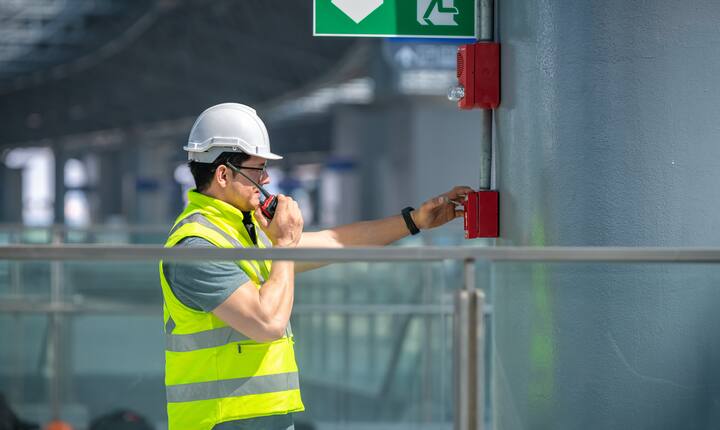
Sprinkler System Inspection
Sprinkler installation
As a building owner, you are responsible for fire safety so that occupants, users and the environment are not put at unnecessary risk. The Besluit bouwwerken leefomgeving (Bbl) contains the nationally applicable regulations for using buildings in a fire-safe manner. In a number of cases there is a deviation from the building code and a sprinkler system is used to ensure equivalence with the building code. The purpose of a sprinkler system is to automatically detect, signal and control a fire, in order to reduce fire damage, save lives or for overall building safety. The system is built around the sprinkler head that reacts to the heat of the fire, causing extinguishing water to flow. Read more about the application of TB67B, control and maintenance regime for water tanks.
Why choose Normec?
We have skilled and experienced inspectors.
Each inspector has their own area of expertise and broad knowledge.
Our goal is to be, and remain, a leading player in the market.
We are ISO 17020 accredited to ensure consistent quality.
Types of sprinkler systems
Wet system: All pipes are filled with water and are pressurized. Once there is a fire and the sprinkler is triggered, the system starts extinguishing. The advantages of this are the simplicity and faster operation of the system.
Dry system: All pipes are filled with dry air or nitrogen, for example. When a sprinkler head opens due to fire, the pressure drops and the main valve opens. Then the pipes fill up and the opened sprinkler heads start extinguishing. This system is suitable for areas where there is a chance of freezing or just high temperatures (>95 degrees).
Pre-action system: A portion of the system is dry. Once fire is detected by the smoke detectors, the sprinkler pipes are filled with water. Does the glass in the sprinkler head break due to the heat of the fire? Only then is does the extinguishing start. With this system, if the sprinkler head is damaged unexpectedly, no water is sprayed. A pre-action system is mainly used in areas with higher susceptibility to water damage.
Deluge system: In this system, all sprinkler heads are open and water is released simultaneously from all sprinkler heads. The system is often activated by a smoke or flame detector, or detection sprinklers. This operation makes this system suitable, for example, where there are explosive or flammable materials. Learn more about a good sprinkler system? Read about preventing obstacles with sprinklers.
When an inspection?
If a sprinkler system is used as an equivalent solution to a building code requirement, this system must always be provided with an inspection certificate in accordance with the CCV inspection scheme. Of course, it is also possible to have an inspection carried out on a voluntary basis. For example, to gain assurance about the performance or status of your sprinkler system or as a second opinion.
Follow-up inspection
Once an initial inspection has been performed, a periodic inspection must then take place. We do this to verify that management is being carried out properly and that the plant is still fulfilling its stated objective. The interval of this inspection is annual, or depending on the requirements set for the object.
Inspection Certificate
An inspection certificate is required to demonstrate that your building meets fire safety standards. During the inspection, the systems, structural provisions, and organizational measures are assessed. If all aspects are in order, you will receive an inspection certificate from us. This serves as proof — for instance to your insurer — that your fire protection complies with the relevant requirements.
These services might also be of interest to you

Fire Alarm System

Evacuation alarm system
Leading companies in this service

Normec FSS
's-Hertogenbosch Netherlands
Curious about what we can do for you?
